The best peach varieties and cultivation features on the site
Among all the fruit trees that are grown in the region with a temperate climate, the most beloved and delicious is the peach. These plants are mainly intended for the southern regions. But with the help of selection, experts bred frost-resistant varieties. Peach loves to be gentle and timely care, a warm place and attention.
Content:
- General information about peach
- Varieties
- Care Tips
- Peach tree pruning
- Planting a seedling
- Reproduction
- Diseases and pests
- Application and useful properties
General information about peach
Peach is a tree-like perennial plant that belongs to the Rosaceae family. It is widespread on almost every continent and is the 10th most commercially grown fruit tree. Its fruit, juicy and sweet, is a favorite treat all over the world.
Features of the structure:
- The height of the tree can reach 4 meters, but usually low-growing varieties are grown in gardens, and bushy ones in cold regions.
- The trunk is of medium thickness, the maximum diameter reaches 25 cm, it bends with growth.
- Average branching, crown width can reach 6 meters.
- In regions with severe winter frosts, peaches are grown in the idea of short, wide bushes. This is done in order to simplify the insulation of the plant during the cold period.
- Branches are strong, bend well, colored in reddish or green tones. The leaves are lacent, oblong, slightly curved, have a pronounced central vein. On the branches, they are arranged alternately on thin and short petioles.
- Leaves are painted in a dark green or green tone from the outside, and light green, muted - from the bottom.
- The buds usually open before the foliage appears. Outwardly, the peach tree during the flowering period resembles almond... The flower consists of 5 rounded petals, is of medium size and is colored pink. The buds are arranged one at a time along the entire length of the branches, sessile, there is no peduncle.
- Peach fruits can be large up to 600 grams in weight and small, about 60-80 grams. Their shape is most often round, oval, slightly elongated. There are also flat, slightly flattened peaches, but these are mostly hybrid varieties. Their pulp is dense, sweet, juicy.
- In the middle there is a large stone with a grain inside. The fruits are colored in yellow, pink orange and red tones from different sides. The skin is thin, with a velvety bloom, sweet fruits are also found, but they belong to nectarines.
Varieties
Early varieties:
- Kiev early. The variety is intended for regions with early spring. The fruits of this peach are medium in size, round, the flesh is juicy, sweet and very aromatic. The skin is dense, thin, colored in a light yellow shade with a pinkish barrel. It takes root well in almost any soil, picky about leaving and at the same time gives a high yield. The variety is resistant to powdery mildew.
- Redhaven. Good variety, adapted to temperate climates. The fruits are juicy, tasty, weighing up to 150 grams.The shape of the fruit is oval, the skin is thin, colored in a light orange tone with red blotches. The pulp is yellow in color, pleasant to the taste and very aromatic. The variety is resistant to common diseases and tolerates spring and autumn frosts well.
Middle and late varieties:
- Cardinal. A strong variety with a high yield. Fruits are medium in size, the largest reaches only 140 grams. The fruits are round, dense, the skin has a colorful red color. Mixed yellow and orange tones. The pulp is juicy, with a unique taste and aroma, the variety is classified as one of the best in terms of taste. The Cardinal is resistant to diseases, but he does not tolerate frosts, therefore he needs special care.
- Kremlin. This variety is the most widespread and popular in temperate regions. The reason for this is that it adapts to almost any living environment. The fruits are large, the skin is orange-yellow with a red barrel. The pulp is firm, juicy, and sweet.
Care Tips
Peach is a southern plant that requires constant warmth and sun. Therefore, growing it in regions with variable temperature conditions, it is necessary to pay more attention and care to the plant.
Peach trees do not react well to strong winds and cold, therefore, the choice of a place for planting must be approached with special responsibility.
In this regard, the plant is very moody and spring drafts, frosts, can lead to discoloration and a barren year. The place should be protected on all sides, have good lighting almost all day, so that the soil warms up well. This is especially important for the spring months.
But peaches are unpretentious to the soil and grow and develop well in almost all regions. The only exception is soil, with a high content of limestone, which can cause illness by the tree. Also, the soil should be well-drained, and the planting site should be on a hill. Waterlogging of the soil also leads to diseases of the peach and the death of the plant.
Watering the peach:
- Peach is picky about watering, especially after landing and during the period of growth and fruit set. But do not get carried away, since the tree does not tolerate waterlogging well.
- From the middle of summer watering carried out only when necessary, for example, if the summers are dry and hot.
- After watering it is recommended mulch soil to retain moisture and periodically water the crowns with a hose and spray.
Top dressing is carried out with organic and mineral fertilizers in the spring. It will be useful to add nitrophosphate after winter, and after flowering, a solution is added under the tree mullein... Such procedures are recommended to be carried out 2 times a month.
Peach tree pruning
For normal growth and development, as well as for abundant fruiting, the correct pruning... No tree needs this process as much as a peach. At a young age, mostly form the crown, in adult trees, during the annual spring pruning, diseased and old branches are removed, and excess young growth is cut off, leaving a few stems for future replacement.
In regions with warm climates, peaches are grown in the shape of a tree. The pruning is carried out accordingly. Usually, tall trees are not grown in gardens, many summer residents have adopted this experience, and try to prune so that the branches grow horizontally, not vertically.
For this, in a young, but not small, tree, the central part is removed, that is, the main trunk at the required height, about 1.5-2 meters.
Leave a few lateral strong branches that will form the crown. All subsequent pruning is carried out in order to remove diseased and old branches and thin out the crown.
In cold regions, the peach is initially formed as a low bush. For this:
- Almost the entire trunk is cut off, leaving only 3-5 buds from the bottom.
- In subsequent years, a small tree with several fruiting stems is formed from each side branch, so as not to overload the plant. Basically, there should be no more than 10 fruiting shoots on one bush.
- Further, the old branches are removed, and young branches are left to develop to replace them.
Planting a seedling
A prepared, healthy and strong peach seedling can be planted in the spring and fall. In warm regions, planting is recommended after the leaves fall on the trees, but no later than October, so that the young tree has time to take root and strengthen root system in a new place. The place of constant growth of the peach must be prepared in advance.
The size of the planting pit depends on the root system and will burn up to 1 meter in diameter and 75 cm in depth.
The entire seedling must be examined from top to bottom, remove diseased and rotten roots, and shorten all healthy ones to 30-35 cm. The tree is placed in a prepared hole, the roots are spread over the entire bottom area, and fertile and fertilized soil is sprinkled on top. After landing the peach must be poured abundantly with warm water and a support to which to tie the trunk must be installed. The distance between plantings should be at least 2.5-3 meters. Peach can be adjacent to any other fruit trees.
In warm regions, peaches do not need insulation, and many varieties are specially bred to be frost-resistant. But in cold regions, without such a procedure, you can lose the garden, so gardeners grow peaches in the form of bushes, for the convenience of shelter and insulation.
In order for the tree to survive the winter well, polystyrene shields are placed around it, the thickness of which should be at least 10 cm.
On top, everything is covered with a film and when it snows, it will serve as an additional shelter. In the spring, after the end of severe frosts, the film is slightly opened so that the air gets to the peach, and awakening begins. Shields are removed only when the risk of night frosts is gone.
Reproduction
Peach can be propagated in three ways: inoculation, cuttings and seeds... If the first two methods require special knowledge, then even a beginner can grow a tree with the help of seeds.
Reproduction by seeds:
- To collect seeds, it is necessary to pick up well-ripened, even overripe, large fruits. Separate the stone from the fruit and wash thoroughly from the pulp.
- You can sow autumn, directly to the place of constant growth.
- The soil should be fertilized, loose and decontaminated.
- For the winter, after watering, the planting site is covered with compost and leaves, this will provide additional nutrition and protect the bone from freezing.
But many gardeners recommend wrapping the collected seeds in a damp cloth and placing them in a dark, cool place, such as in the vegetable section of the refrigerator. The fabric should not dry out, so it is periodically moistened. Thus the bones pass stratification... And in the spring, when the sun has already warmed up the soil sufficiently, the seeds can be planted in the ground. Young trees need regular abundant watering, therefore, the planting site before pecking and during the growth of the peach must be constantly moistened and the soil must not be allowed to dry out.
Peach cuttings:
- For cuttings choose healthy adult branches, the lower part of which is already stiff. The stems should not be thick, the middle part is selected.
- One cutting should have at least 4 healthy buds. The lower part can be evenly cut, separated from the tree together with the "heel" and with a hammer-shaped bottom, cut together with a part of the twig.
- It is recommended to harvest cuttings in the autumn period after the foliage has fallen before winter frosts. During this period, the tree accumulates a large amount of all the substances necessary for growth and development, which will help the cuttings to root well and develop buds into growth. The length of one cutting is approximately 30 cm.
- After cutting, the cuttings are tied together and placed in a box of wet sand vertically on storage and transferred to the basement. The sand should not dry out completely, so it is periodically moistened. By spring, on some branches, the rudiments of roots should already appear, all cuttings process disinfectants and stimulants.
- Rooting can be carried out in the open field by planting cuttings during a period when the soil is completely warmed up. Or prepare special containers with a fertile loose substrate and start rooting in early spring in order to plant ready-made seedlings to warmth.
Vaccination carried out in the spring with green cuttings. The process is quite complex and lengthy and is used mainly by professional gardeners. You can plant a peach on any young apricot tree.
Diseases and pests
The peach is often attacked by aphids. She loves to sit on young shoots, this can be seen by the twisted and spoiled leaves. If you do not get rid of in time pest, the aphid can infect the entire tree. Preventive treatment in the spring is recommended, and the use of special preparations when aphids appear on trees.
Of the diseases, peaches are susceptible to fungal diseases.
Powdery mildew often attacks the plant; it primarily damages the tops of young shoots and young leaves. It can be noticed by the dense white bloom that forms on the plant, and if you do not take action, the disease will spread to neighboring trees. Therefore, if powdery mildew is found on any plant, it is necessary to treat it with special fungicides not only the diseased tree, but the entire site.
Application and useful properties
Peach fruits contain a large amount of vitamins, minerals and trace elements that have a beneficial effect on the human body. This fruit is considered a dietary product, it contains carbohydrates, proteins, sugars and fiber, which helps to improve digestion. Also, with the help of juicy and sweet peaches, you can restore the normal level of iron in the body, because this substance in them is 2 times more than in apples.
Peaches are used raw as any fruit. Also compotes and preserves are made from it and rolled up for the winter. Peaches are ranked among the most delicious fruits on the planet. Also, peach and its seed are used in cosmetic production. They are found in creams, shampoos, masks and scrubs.
More information can be found in the video.



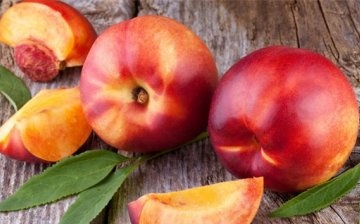
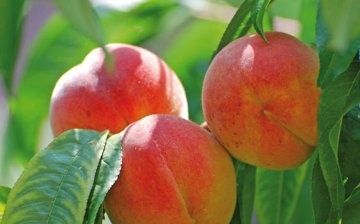

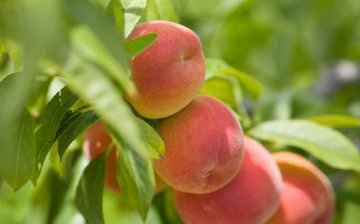
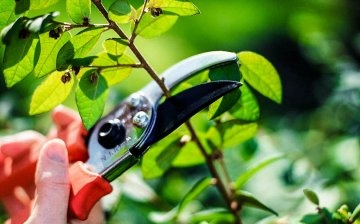
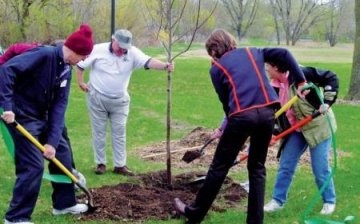
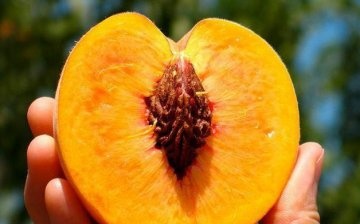
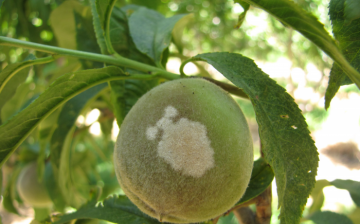











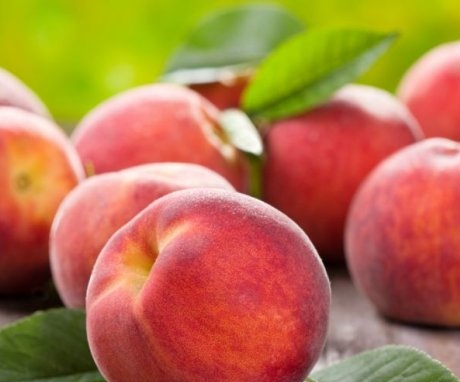
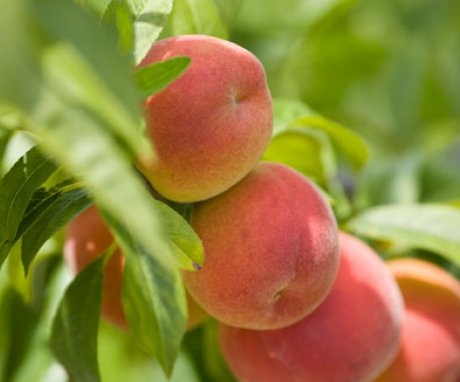
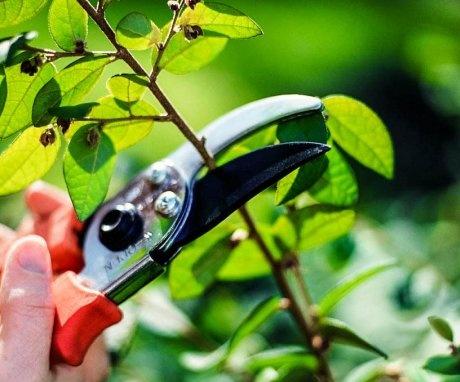
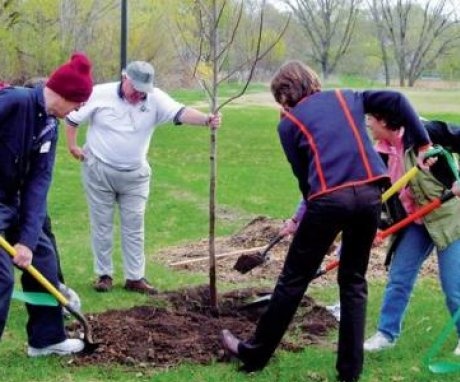
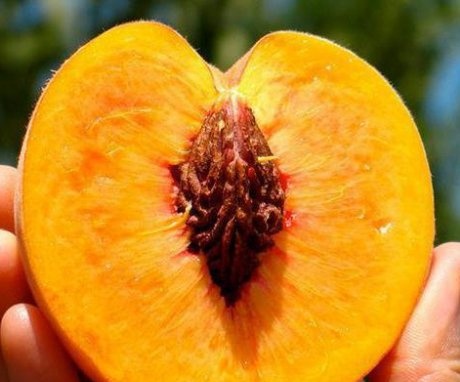
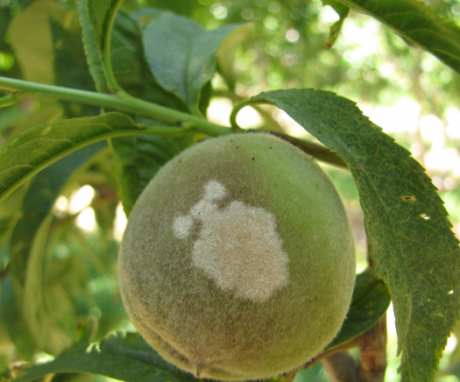

Peach is a very beautiful tree, it has beautiful flowers in spring and leaves and fruits in summer. The peach begins to bear fruit early, but it can easily freeze out from short-term frosts. After 15 years, the tree begins to dry out.